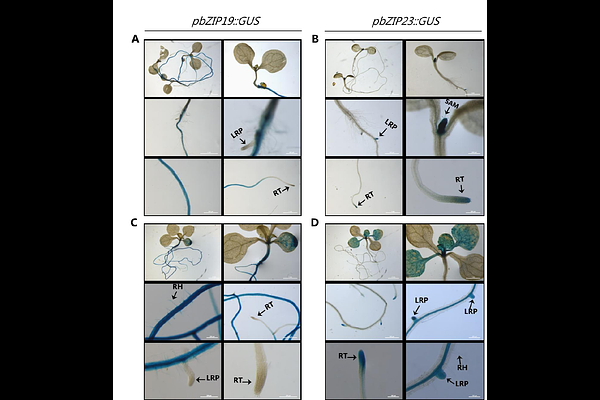Expression patterns of Arabidopsis bZIP19 and bZIP23 elucidate their individual contribution to the regulation of the Zn deficiency response

Expression patterns of Arabidopsis bZIP19 and bZIP23 elucidate their individual contribution to the regulation of the Zn deficiency response
Campilho, A.; Lilay, G. H.; Benvindo, M.; Castro, P. H.; Assuncao, A. G.
AbstractPlants control the availability of nutrients through tightly regulated homeostasis networks. In Arabidopsis thaliana, the transcription factors bZIP19 and bZIP23 regulate the homeostasis of the micronutrient Zn, acting as the key regulators of the Zn deficiency response and as sensors of cellular Zn status. Although there is a degree of functional redundancy between bZIP19 and bZIP23, their individual contributions in this regulatory process are not yet understood. To gain insight on the individual contributions of bZIP19 and bZIP23, we analysed the phenotypes of bzip19, bzip23 and bzip19bzip23 single and double mutants in response to Zn deficiency, and histochemical GUS staining in pbZIP19::GUS and pbZIP23::GUS lines. Analysis of mutant phenotypes indicated unequal redundancy between bZIP19 and bZIP23. Expression of GUS in pbZIP19::GUS was observed in differentiated root tissues including root hairs, in the vascular tissue of hypocotyl, cotyledons and petals, in leaf trichomes and stamen filament. In pbZIP23::GUS, the expression was predominant in root and shoot apical meristems, being also observed in leaves, root vasculature, stamen filament and anthers. In summary, bZIP19 and bZIP23 have different and mostly non-overlapping tissue-specific expression patterns. This may explain the unequal redundancy between bZIP19 and bZIP23 and their evolutionary retention as paralogs.